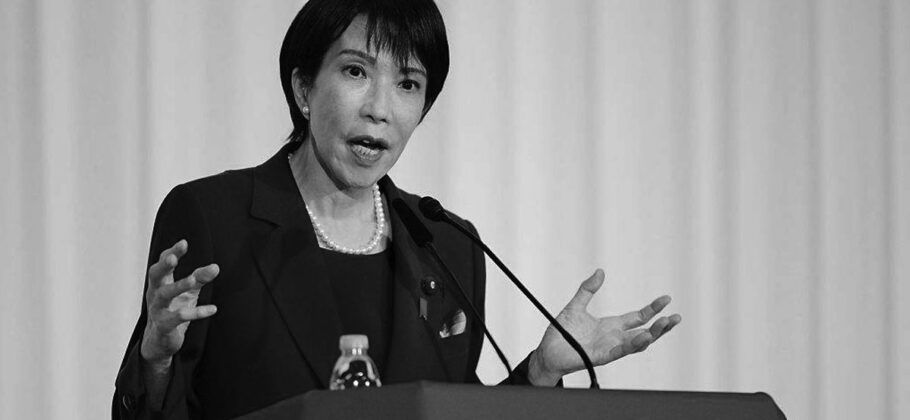A Historic Shift in Japan’s Security Policy
After decades of maintaining one of the world’s most pacifist defense postures, Japan is preparing for a historic leap in military spending. Long confined by a self-imposed ceiling of 1 percent of GDP, Japan’s new government under Prime Minister Sanae Takaichi has committed to breaking from that tradition, accelerating a plan to double defense spending to 2 percent this year instead of by 2027. The decision coincides with President Donald Trump’s upcoming visit to Asia, during which he is expected to press Japan to go even further—to as high as 5 percent of GDP, matching NATO’s target for collective defense.
Foreign Minister Toshimitsu Motegi said Tokyo is “firmly preparing for President Trump’s visit,” signaling the importance of the alliance as Japan enters a new era of defense independence.
Trump’s Push and Japan’s Response
Trump has long urged U.S. allies to shoulder more of the burden for their own protection, particularly in the Indo-Pacific, where 60,000 American troops are stationed in Japan. He has questioned why the United States continues to fund the bulk of regional security while facing trade barriers and tariffs from its partners. The Trump administration recently imposed a 15 percent tariff on imported Japanese goods, including higher rates on steel and auto parts, further underlining the expectation of reciprocity in defense spending.
For Takaichi, a nationalist and Japan’s first female prime minister, Trump’s demands align with her campaign promise to declare that “Japan is back.” She has embraced a more assertive defense policy that includes revising school textbooks to reflect a stronger national identity and reducing dependence on the United States for military protection.
The Threat from China
China’s growing military power and increasingly aggressive maneuvers have transformed Japan’s security outlook. Repeated incursions near the Senkaku Islands in the East China Sea have alarmed Japanese defense planners. Beijing’s massive naval expansion, combined with a surge in missile testing and cyber activities, has pushed Tokyo to prioritize long-range deterrence.
A recent report warned that “China’s growing nuclear arsenal aims to break U.S. alliances and dominate Asia,” underscoring why Japan’s new leadership views rearmament as essential to national survival. Takaichi’s hawkish approach reflects a recognition that deterrence failure in Europe, following Russia’s invasion of Ukraine, could be a warning for Asia.
Where the Money Will Go
Japan’s revised budget framework represents a historic investment in modern warfare. For fiscal year 2025, Japan has requested ¥8.73 trillion ($58 billion USD), with plans to climb to 2 percent of GDP—or about ¥9.36 trillion annually. Major allocations include:
- ¥970 billion for long-range precision missiles such as U.S.-made Tomahawks and Japan’s upgraded Type-12 surface-to-ship systems, extending Japan’s strike reach to over 1,000 kilometers.
- ¥537 billion for integrated air and missile defense systems to counter hypersonic and ballistic threats from China and North Korea.
- ¥491 billion for cyber and space defense capabilities, including satellite constellations for early-warning and electronic warfare.
- ¥407 billion for command and intelligence systems, enhancing coordination with U.S. forces.
- ¥103 billion for unmanned and drone operations.
- ¥2.95 trillion for sustainability, ammunition stockpiles, and hardened facilities—ensuring Japan can sustain prolonged combat operations.
The focus on counterstrike capability marks a profound shift from Japan’s traditional “shield-only” doctrine under the U.S. alliance. Japan is now seeking to play both shield and sword, a role that could reshape Asia’s balance of power.
Why Trump Encourages Japan’s Buildup
For Trump, Japan’s expanded military investment represents more than cost-sharing—it reinforces the Indo-Pacific alliance architecture he sees as critical to containing China. The president has repeatedly said that allies “must do their part” and that “the era of free protection is over.” Encouraging Japan to match NATO’s standards fits his broader strategy of strengthening deterrence through distributed regional power.
Trump’s advisors also view Japan’s rearmament as a stabilizing counterweight to Chinese assertiveness. The move could ease pressure on U.S. forces while encouraging other Asian allies, such as South Korea and Taiwan, to follow suit.
Japan’s population remains divided. Critics argue that the buildup contradicts Article 9 of the pacifist constitution, which renounces war. Others warn that financing such a surge through bonds or higher taxes could strain an already aging economy. Yet public opinion has shifted markedly since the Ukraine war and China’s provocations, with a growing majority now supporting a stronger military posture.
Analysts at Japan’s Ministry of Defense describe the change as “a strategic recalibration, not a reaction,” linking Japan’s defense to broader global security and the free and open Indo-Pacific vision. Daisuke Kawai, a defense expert, called it “a pivotal moment that aligns Japan’s security with both European and Asian realities.”
Regional responses have been mixed. South Korea and Taiwan welcome Japan’s deterrent capability, while China accuses Tokyo of “reviving militarism.” Nonetheless, Japan’s modernization is part of a larger regional trend. Across Asia, nations are rapidly rearming amid the decline of postwar assumptions that peace could be maintained through restraint alone.
Japan’s transformation from a purely defensive state into a proactive security power will test both its alliances and its domestic political will. The challenge now is to balance rearmament with diplomacy, reassure its neighbors, and ensure the Japanese public understands why this pivot is necessary.
As Trump and Takaichi prepare to meet, Japan’s message is clear: the country is ready to stand on its own feet. The postwar era of dependency is ending, replaced by a Japan determined to deter threats, defend freedom, and redefine its role in the Indo-Pacific.




